Organic gardening in Texas offers a rewarding experience. The state’s climate supports year-round cultivation.
Gardening organically involves avoiding synthetic fertilizers and pesticides. It means using natural methods to grow healthy plants. In Texas, the unique climate presents both challenges and opportunities. From the hot summers to mild winters, each season requires special care. Understanding the best practices for each season helps ensure a bountiful harvest.
Whether you’re a novice or an experienced gardener, learning how to adapt to Texas’ climate is key. This guide will help you navigate the organic gardening season in Texas. Get ready to grow fresh, healthy produce right in your backyard.
Climate And Soil In Texas
Organic gardening season in Texas is a unique experience, thanks to the state’s diverse climate and soil conditions. Understanding these factors is crucial for a successful garden. The climate and soil in Texas vary widely, impacting what you can plant and when. Let’s explore the types of soil and climate zones in Texas to help you plan your organic garden effectively.
Types Of Soil
Texas has a variety of soil types, each influencing the organic gardening season in Texas. Knowing your soil type is key to a thriving garden. Here are the main types of soil found in Texas:
- Clay Soil: This soil is heavy and can become compacted. It holds water well but can be challenging for root growth.
- Sandy Soil: Light and drains quickly. It warms up fast in spring but doesn’t hold nutrients well.
- Loam Soil: A balanced mix of sand, silt, and clay. Ideal for gardening due to its texture and fertility.
- Caliche Soil: Common in Central and South Texas. It has a high calcium carbonate content, which can be tough for plants.
Understanding your soil’s characteristics helps in selecting the right plants and amendments. For instance, Texas vegetable planting calendars can guide you on what can I plant now in Texas based on your soil type. A soil test can provide detailed information about your soil’s pH and nutrient levels.
Here is a quick comparison of the main soil types:
| Soil Type | Characteristics | Best For |
|---|---|---|
| Clay | Heavy, water-retentive | Vegetables that need steady moisture |
| Sandy | Light, fast-draining | Root vegetables like carrots |
| Loam | Balanced, fertile | Most vegetables |
| Caliche | High calcium, hard | Drought-tolerant plants |
Table of Contents
Climate Zones
Texas is vast, with several climate zones affecting the planting season in Texas. These zones impact when to plant vegetables in Texas. The state spans USDA hardiness zones 6 through 9, each with unique features:
- Zone 6: Northern Texas. Cold winters and hot summers. Plant cool-season crops early and warm-season crops after the last frost.
- Zone 7: Central Texas. Milder winters. A longer growing season allows for multiple plantings.
- Zone 8: Southern Texas. Minimal frost. Ideal for year-round gardening with careful summer planning.
- Zone 9: Coastal Texas. Hot and humid. Great for tropical and subtropical plants.
Using a Texas vegetable planting calendar tailored to your zone can help optimize your garden’s yield. For example, in Zone 8, you can plant tomatoes in early spring and again in late summer.
Here’s a brief overview of planting times across different zones:
| Zone | Planting Season | Examples of Crops |
|---|---|---|
| Zone 6 | March to October | Broccoli, Carrots |
| Zone 7 | February to November | Lettuce, Peppers |
| Zone 8 | January to December | Tomatoes, Squash |
| Zone 9 | Year-round | Okra, Melons |
Understanding your climate zone and soil type helps determine what can I plant now in Texas. This knowledge ensures a productive and sustainable organic garden.
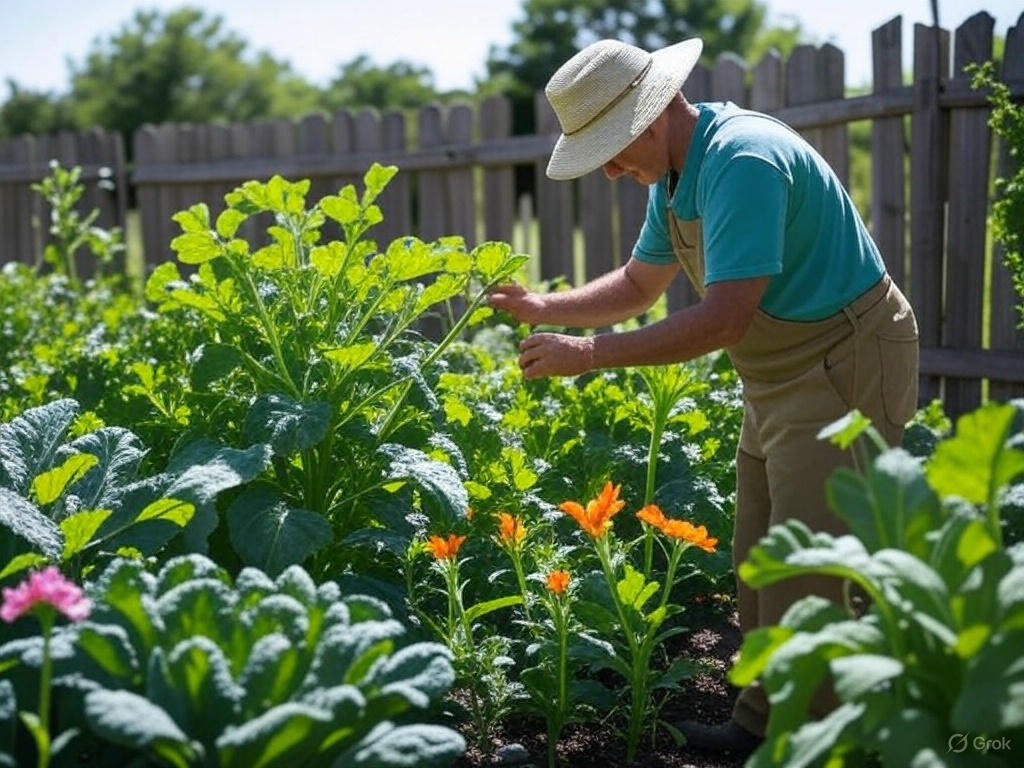
Choosing The Right Crops
Organic gardening season in Texas offers a unique opportunity to grow a variety of crops. Choosing the right crops is crucial for a successful garden. Knowing the planting season in Texas and what can be planted now in Texas will help you make the best choices. Let’s explore some options for seasonal vegetables, herbs, and fruits.
Seasonal Vegetables
Texas has a diverse climate, making it perfect for growing a wide range of vegetables. The Texas vegetable planting calendar is a great tool to know when to plant vegetables in Texas. Here are some top choices for each season:
Spring:
- Tomatoes – Plant in late March to April.
- Bell Peppers – Plant after the last frost in April.
- Squash – Early to mid-April is ideal.
Summer:
- Cucumbers – Plant in May for a summer harvest.
- Okra – Best planted in late May to June.
- Eggplants – Early June planting is recommended.
Fall:
- Broccoli – Plant in September.
- Cauliflower – Late September to early October.
- Carrots – October is the best time.
Winter:
- Spinach – Plant in December.
- Garlic – Best planted in late October.
- Kale – Plant in November.
| Vegetable | Planting Time |
|---|---|
| Tomatoes | Late March to April |
| Cucumbers | May |
| Broccoli | September |
| Spinach | December |
Herbs And Fruits
Herbs and fruits are great additions to your organic garden. They require less space and can be grown in containers. The Texas climate supports a variety of herbs and fruits. Here are some options:
Herbs:
- Basil – Plant in late spring. Harvest during summer.
- Mint – Plant in spring. It grows well in partial shade.
- Cilantro – Best planted in early fall.
Fruits:
- Strawberries – Plant in late winter for a spring harvest.
- Blueberries – Best planted in late fall.
- Figs – Plant in early spring for summer fruit.
Using the Texas vegetable planting calendar, you can determine the best times for these plants. Knowing when to plant vegetables in Texas ensures a fruitful harvest. Organic gardening season Texas is the perfect time to cultivate a variety of crops. Whether you are interested in vegetables, herbs, or fruits, planning and timing are key to a thriving garden.
Planting Schedule
Organic gardening season in Texas offers a unique opportunity to grow a wide variety of vegetables year-round. Understanding the planting schedule is key to a successful garden. The Texas vegetable planting calendar can guide you on what to plant and when. Let’s dive into the best times for spring and fall planting in Texas.
Spring Planting
Spring is an ideal time for planting many vegetables in Texas. The planting season typically begins in late February and extends through April. It’s essential to know the last frost date in your area, as this will determine the optimal time to start planting.
Here are some vegetables that thrive in the spring:
- Tomatoes
- Peppers
- Squash
- Cucumbers
- Beans
Early spring is perfect for cold-hardy vegetables, while mid-to-late spring suits warm-season crops. Below is a table to help you plan your spring garden:
| Vegetable | Planting Time |
|---|---|
| Tomatoes | Late February – March |
| Peppers | March – April |
| Squash | April |
| Cucumbers | April |
| Beans | April |
Pay attention to soil temperature before planting. Warm-season crops require soil temperatures above 60°F. Use a soil thermometer to ensure the best conditions for your seeds.
Fall Planting
Fall offers another opportunity for organic gardening in Texas. The planting season typically starts in late August and extends through October. This period is ideal for cool-season vegetables that thrive in milder temperatures.
Some popular fall vegetables include:
- Broccoli
- Cauliflower
- Carrots
- Lettuce
- Spinach
Fall planting can be tricky due to the lingering summer heat. Start seeds indoors and transplant them once temperatures cool down. Here’s a helpful table for planning your fall garden:
| Vegetable | Planting Time |
|---|---|
| Broccoli | Late August – September |
| Cauliflower | September |
| Carrots | September |
| Lettuce | September – October |
| Spinach | September – October |
Watering is crucial during fall planting. The soil tends to dry out quickly in late summer. Keep the soil moist but not waterlogged to ensure healthy growth.
By following the Texas vegetable planting calendar, you can enjoy a bountiful harvest throughout the organic gardening season in Texas. Happy planting!
Organic Pest Control
Organic gardening season in Texas is a wonderful time for both new and experienced gardeners. The warm climate and long growing season make it ideal for a variety of plants. However, keeping pests at bay is crucial. Organic pest control ensures your garden thrives without harmful chemicals. Let’s explore some effective methods.
Natural Repellents
Natural repellents are a safe and easy way to protect your plants from pests. They keep unwanted insects away without damaging the environment.
Here are some effective natural repellents:
- Garlic Spray: Blend garlic with water and spray it on plants. The strong smell deters pests.
- Neem Oil: This oil disrupts the life cycle of many pests. Mix it with water and spray on your plants.
- Chili Pepper Spray: Mix chili powder with water. Spray it on plants to keep insects away.
- Soap Spray: Mix liquid soap with water. Spray on plants to kill soft-bodied insects.
Using these methods aligns with the Texas vegetable planting calendar. It ensures your garden remains healthy throughout the planting season in Texas.
Additionally, planting certain herbs can repel pests:
| Herb | Pests Repelled |
|---|---|
| Mint | Aphids, Fleas |
| Basil | Mosquitoes, Flies |
| Rosemary | Moths, Beetles |
These simple methods help maintain an organic garden. They ensure your vegetables grow free from harmful pests.
Beneficial Insects
Beneficial insects are nature’s way of controlling pests. They help keep the garden ecosystem balanced. Introducing these insects can be a game-changer for your organic garden.
Some beneficial insects include:
- Ladybugs: They eat aphids and other small pests. Ladybugs are great for your garden.
- Praying Mantises: These insects eat a variety of pests. They are excellent for pest control.
- Lacewings: Their larvae consume aphids, mites, and other insects.
- Bees: While primarily pollinators, bees help your garden flourish.
Creating a habitat for these insects is easy. Plant flowers like marigolds, daisies, and sunflowers. They attract beneficial insects and support your garden.
Here is a quick guide on how to attract beneficial insects:
| Insect | Plants to Attract |
|---|---|
| Ladybugs | Dill, Fennel |
| Lacewings | Yarrow, Goldenrod |
| Bees | Lavender, Clover |
Using beneficial insects aligns with the Texas vegetable planting calendar. It ensures a thriving garden during the organic gardening season in Texas. Knowing what can be planted now in Texas and when to plant vegetables in Texas helps maintain a healthy garden ecosystem.
Watering Techniques
Organic gardening season in Texas is an exciting time for gardeners. One crucial aspect of ensuring a thriving garden is mastering watering techniques. Proper watering can make or break your garden. Here are some effective methods to keep your plants hydrated and healthy.
Irrigation Methods
Understanding irrigation methods is essential for a successful organic gardening season in Texas. Given the diverse climate and soil conditions, selecting the right method can optimize water usage and promote plant health.
Here are a few popular irrigation methods:
- Drip Irrigation: Delivers water directly to the plant roots. Minimizes water waste.
- Soaker Hoses: Distributes water slowly and evenly. Prevents soil erosion.
- Sprinkler Systems: Suitable for larger gardens. Covers wide areas efficiently.
Each method has its advantages. Drip irrigation is perfect for vegetable gardens, ensuring each plant receives adequate water. Soaker hoses are ideal for flower beds, as they gently hydrate the soil without disturbing delicate plants.
Consider installing a timer for your irrigation system. This ensures consistent watering, especially during the hot Texas summer. According to the Texas vegetable planting calendar, it’s crucial to maintain steady moisture levels for crops like tomatoes, peppers, and cucumbers.
To help decide which method suits your garden, here’s a comparison table:
| Irrigation Method | Advantages | Disadvantages |
|---|---|---|
| Drip Irrigation | Water efficiency, root-level hydration | Installation cost, maintenance |
| Soaker Hoses | Simple setup, gentle watering | Limited coverage, potential clogging |
| Sprinkler Systems | Wide coverage, easy adjustment | Water waste, uneven distribution |
Rainwater Harvesting
Rainwater harvesting is an excellent technique to make the most of the organic gardening season in Texas. This method involves collecting and storing rainwater for garden use. It conserves water and reduces dependency on municipal water supplies.
Setting up a rainwater harvesting system can be straightforward. Here are key steps:
- Install Gutters: Direct rainwater from your roof to storage containers.
- Use Barrels: Store collected water. Ensure they have lids to prevent debris.
- Set Up a Distribution System: Connect barrels to your irrigation system for easy water access.
Benefits of rainwater harvesting:
- Reduces water bills.
- Provides a natural source of water for plants.
- Helps during droughts.
Rainwater is naturally soft and free from chemicals, making it ideal for sensitive plants. According to the Texas vegetable planting calendar, using harvested rainwater can be especially beneficial during dry spells.
Regularly check your barrels for algae and clean them to maintain water quality. This method supports sustainable gardening practices and aligns with the principles of organic gardening.
For those wondering what can I plant now in Texas, consider crops like leafy greens and root vegetables. These thrive with consistent moisture from rainwater harvesting.
By adopting these watering techniques, you can ensure a successful planting season in Texas. The right irrigation method combined with rainwater harvesting will keep your garden flourishing throughout the year.
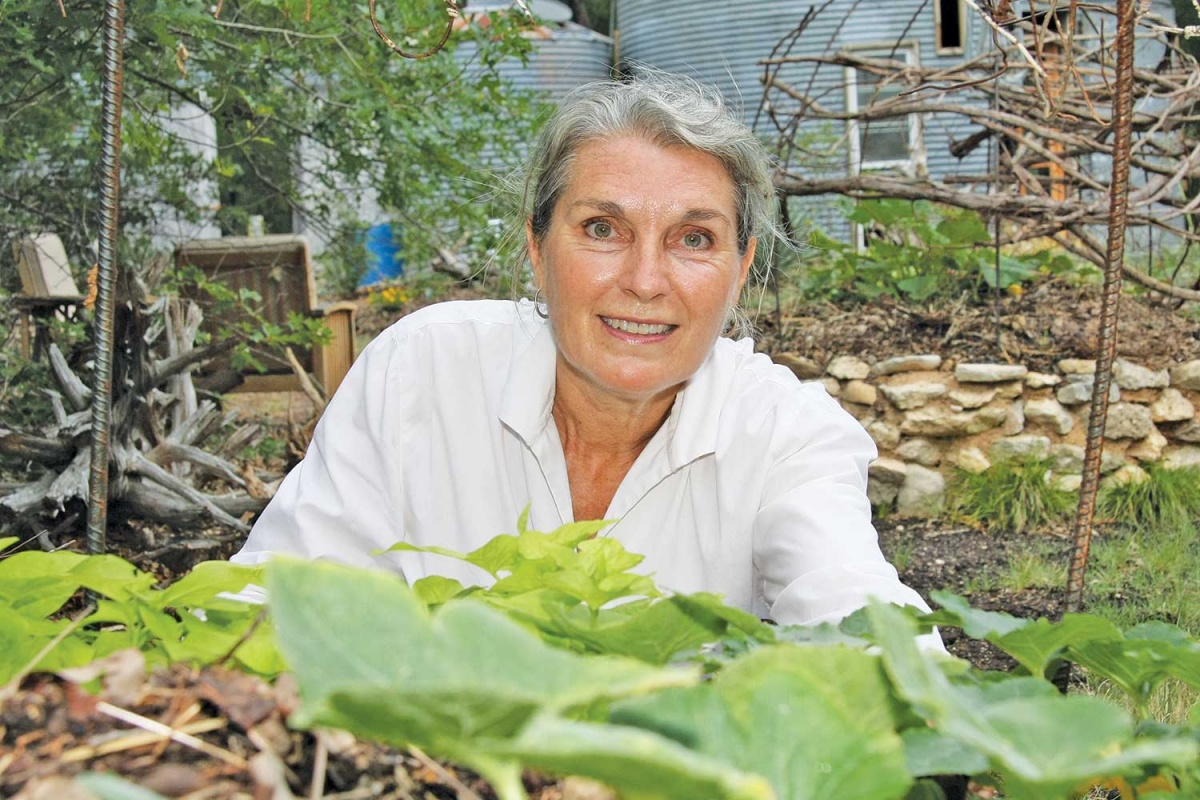
Soil Enrichment
The organic gardening season in Texas is an exciting time for green thumbs. Soil enrichment is a key aspect of successful gardening. Healthy soil is the foundation for vigorous plants. Enriching your soil ensures your garden will thrive throughout the planting season in Texas. Let’s explore two vital techniques for soil enrichment: composting and mulching.
Composting
Composting transforms kitchen scraps and yard waste into rich, dark soil. This organic matter is full of nutrients that benefit your garden. In Texas, composting is especially beneficial due to the hot climate which speeds up the decomposition process.
Here are some steps for effective composting during the organic gardening season in Texas:
- Gather Materials: Collect vegetable scraps, coffee grounds, eggshells, grass clippings, and leaves.
- Layering: Alternate between green (nitrogen-rich) and brown (carbon-rich) materials.
- Moisture: Keep the compost pile moist but not waterlogged.
- Aeration: Turn the pile every few weeks to allow air flow.
- Patience: Composting takes time, usually a few months.
Utilize the finished compost in your garden beds or mix it with existing soil. This process improves soil structure, enhances nutrient content, and boosts plant health. By following the Texas vegetable planting calendar, you can determine what can I plant now in Texas and ensure your compost is ready to nourish those plants.
Mulching
Mulching is another excellent method for soil enrichment. It involves covering the soil with organic or inorganic materials. This practice helps retain moisture, suppress weeds, and regulate soil temperature. During the planting season in Texas, mulch can protect your garden from the intense sun and heat.
Here are some tips for effective mulching:
- Choose the Right Mulch: Organic options include straw, wood chips, and leaves.
- Apply Evenly: Spread a 2-3 inch layer of mulch around plants.
- Keep Away from Stems: Avoid piling mulch directly against plant stems to prevent rot.
- Replenish: Add more mulch as it decomposes or gets blown away.
A table can help you decide when to plant vegetables in Texas and what mulch works best:
| Vegetable | Best Planting Time | Recommended Mulch |
|---|---|---|
| Tomatoes | March-April | Straw |
| Peppers | April-May | Wood Chips |
| Squash | May-June | Leaves |
Understanding when to plant vegetables in Texas ensures your mulch serves its purpose effectively. Mulching, combined with composting, creates an optimal environment for your garden to flourish during the organic gardening season in Texas.
Harvesting And Storage
The organic gardening season in Texas brings the joy of harvesting and storing your fresh produce. Knowing the right techniques ensures your hard-earned vegetables stay fresh and nutritious for as long as possible. This section will guide you through the best practices for harvesting and the methods for long-term storage.
Best Practices
Harvesting vegetables at the right time is crucial. The Texas vegetable planting calendar helps gardeners know when each vegetable is ready. For instance, tomatoes are best picked when they are fully red but still firm. Leafy greens like spinach should be harvested early in the morning when they are most crisp.
Here are some best practices for harvesting:
- Use clean tools: Ensure scissors and knives are clean to prevent disease spread.
- Harvest regularly: Regular harvesting encourages more growth and prevents overripening.
- Handle gently: Avoid bruising or damaging the vegetables as this can lead to quicker spoilage.
Having a clear understanding of when to plant vegetables in Texas aids in planning your harvest. The planting season in Texas varies by region, but generally, spring and fall are the prime times.
Here’s a quick reference table for harvesting common vegetables:
| Vegetable | Signs of Readiness |
|---|---|
| Tomatoes | Fully red, firm |
| Spinach | Leaves are crisp, vibrant green |
| Carrots | 1/2 inch of the root showing above soil |
Long-term Storage
Storing your harvest properly is just as important as harvesting. Different vegetables require different storage methods. Following these tips helps maintain freshness and nutritional value.
For long-term storage:
- Root vegetables: Carrots, potatoes, and beets store well in a cool, dark place. Use a root cellar or a cool pantry.
- Leafy greens: Spinach and lettuce keep best in the refrigerator. Wrap them in a damp cloth and place them in a perforated plastic bag.
- Tomatoes: Store at room temperature. Avoid refrigeration as it can affect flavor and texture.
Fermentation and canning are also great methods for preserving your harvest. These methods can extend the life of your vegetables significantly.
Using the Texas vegetable planting calendar helps you plan your planting and harvesting schedule. This ensures you know what can I plant now in Texas and how to best store your produce.
Here’s a basic guide for storing common vegetables:
| Vegetable | Storage Method |
|---|---|
| Carrots | Cool, dark place |
| Spinach | Refrigerator, damp cloth |
| Tomatoes | Room temperature |
With these tips, you can enjoy your organic produce from the planting season in Texas for months.
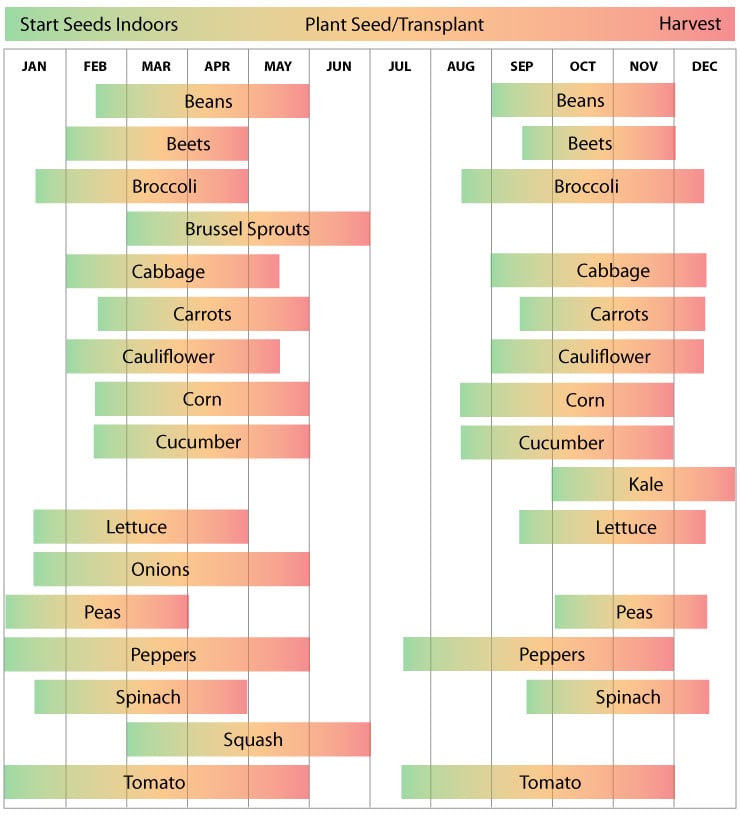
Frequently Asked Questions
What Month Should You Start A Garden In Texas?
Start a garden in Texas in late February or early March. This timing suits most vegetables and flowers.
Can You Grow A Garden Year Round In Texas?
Yes, you can grow a garden year-round in Texas. The state’s mild climate supports continuous gardening. Choose seasonal plants for best results.
What Is The Growing Season In Texas?
Texas has a long growing season, typically lasting from March to November. Warm temperatures extend the growing period.
When To Plant Landscaping In Texas?
Plant landscaping in Texas during the fall or early spring. These seasons offer optimal growing conditions. Avoid extreme summer heat and winter frost.
What Is The Best Time To Start Organic Gardening In Texas?
Spring and fall are the best times. The weather is mild, ideal for plants.
Which Vegetables Grow Well In Texas Organic Gardens?
Tomatoes, peppers, and lettuce grow well. These vegetables thrive in Texas climate.
How To Prepare Soil For Organic Gardening In Texas?
Add compost and organic matter. This improves soil fertility and structure.
Conclusion
Organic gardening in Texas offers many benefits. Fresh produce. Healthier lifestyle. Less environmental impact. It’s a rewarding experience. You connect with nature. Learn new skills. Enjoy the fruits of your labor. Texas climate allows diverse plants. From tomatoes to herbs.
Each season brings new opportunities. Spring blossoms. Summer harvests. Fall planting. Winter preparation. Start small. Experiment with different techniques. Composting. Mulching. Watering wisely. Share tips with friends. Grow your own garden community. Enjoy the journey. Appreciate the beauty. Feel the satisfaction.
Organic gardening is more than a hobby. It’s a way of life.

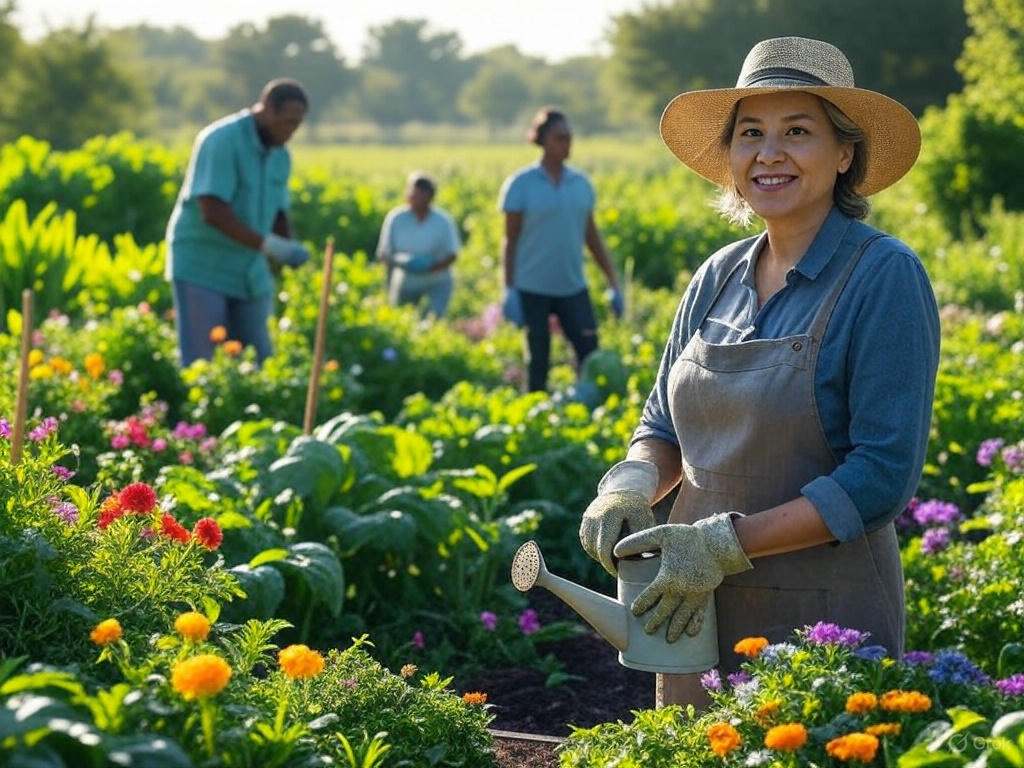

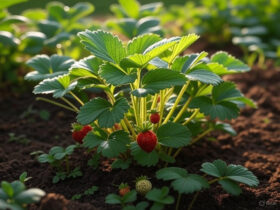



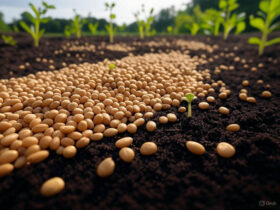


Leave a Reply